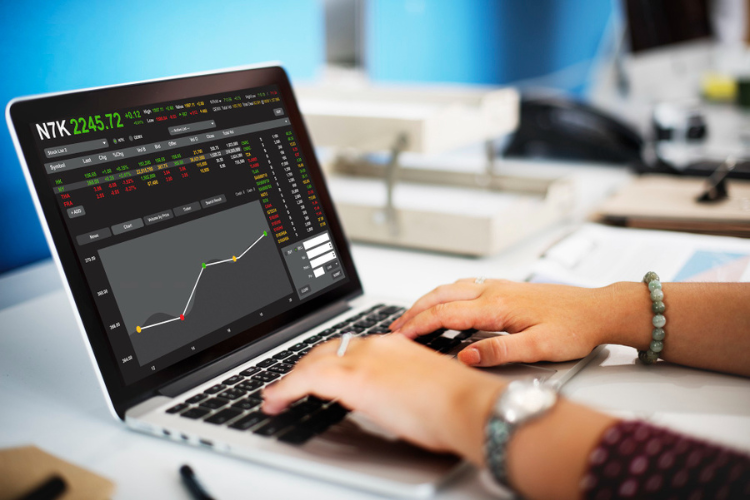Table Of Contents
Why Fair Value Gaps Matter and How to Spot Them
Fair value gaps are an essential concept for traders aiming to decode market behavior and improve their trading success.
If you want to elevate your trading skills, the ability to understand how to spot fair value gaps on charts is a critical first step.
Moreover, this knowledge helps identify areas of price imbalance where the market could return to fill liquidity gaps, providing potential entry and exit points for trades.
So, if you are wondering, “how to use fair value gaps in trading strategies? I have got the perfect guide for you.
In today’s article, I have brought you a comprehensive breakdown of fair value gaps. From exploring what they are, how to spot them on the charts, why they matter, and many more.
So keep reading to know more!
What Are Fair Value Gaps?
A fair value gap (FVG) occurs when a price moves rapidly in just one direction it leaving a space on the chart where there is little to no trading that happened.
Moreover, these gaps show that buyers and sellers are unequal because big firms take action or news breaks out.
Due to this, such gaps represent areas where the market temporarily skipped over a group of orders.
Also, this created essentially a void within price action.
Additionally, these gaps usually appear on candlestick charts as a space between the wicks of consecutive candles, as they indicate that the price jumped aggressively from one level to another without trading within the in-between range.
How To Spot Fair Value Gaps On Charts?
Moreover, recognizing fair value gaps involves identifying regions where the market has moved too quickly to fill all orders in a price range.
On a candlestick chart:
- Look for a price range between the high of a candle and the low of a subsequent candle where no trading occurred.
- Specifically, the gap is often seen as no overlap between consecutive candles’ wicks or bodies.
- Moreover, this price space signifies a liquidity imbalance and may be filled later when the price revisits that zone.
Also, traders can spot these manually using indicators or automatically use charting tools, particularly designed to highlight fair value gaps.
For example, certain tools highlight bullish fair value gaps in green, plus these highlights mark potential support areas.
In addition to this, the tools also highlight bearish fair value gaps within red, and these highlights do indicate possible resistance zones.
Why Fair Value Gaps Matter In Trading?
Fair value gaps are meaningful because the market seeks efficiency and balance over time.
Moreover, untraded areas that were left behind are usually filled when the price returns because these gaps act as magnets.
Traders can obtain planned points from this return to fill the gap that is to:
- Enter trades anticipating price reversal or continuation.
- Set profit targets assuming the gap will be filled.
- Place stop-loss orders just beyond the gap to manage risk.
Moreover, many advanced traders consider fair value gaps a footprint of institutional activity, often described as “smart money” imbalances that signify where large players may have left pending orders.
Popular Strategies Using Fair Value Gaps
If you want to utilize a proper strategy for trading, here is a list of all the popular and effective strategies using the fair value gaps.
1. Gap Fill Strategy
Also, the most straightforward approach involves waiting for the price to come back and fill the fair value gap before entering a trade.
This gap-filling behavior is common and can be exploited by:
- Entering trades near the edge of the gap area.
- Setting take-profit levels at the opposite side of the gap.
- Tightening stops beyond the gap boundaries.
2. Trend Confirmation
Moreover, fair value gaps might confirm continuing trends. So, you can check them to know how other traders are trading their shares.
For example, within a bullish market, a gap forming during an upward rally can signal strong momentum.
So, traders can wait in order to retrace back toward the gap since they buy in alignment with the trend.
3. Combining With Other Tools
To increase the reliability of trade setups, effective traders combine fair value gap analysis with support as well as resistance levels.
Moreover, order blocks, candlestick patterns, and volume profiles are used as well.
For example, the probability of getting a bounce is something that strengthens when the price waits in order to approach some fair value gap that is near a major support zone.
Advanced Features In Fair Value Gap Analysis
Modern charting platforms have introduced dynamic features that enhance fair value gap trading.
Tools can now:
- Track and shrink gaps dynamically as price fills them, showing the remaining imbalance instead of static zones.
- Automatically remove gaps from charts once fully filled, reducing clutter.
- Display gaps from multiple timeframes on the same chart, providing context for higher timeframe imbalances.
These features help maintain clarity and precision in trading decisions.
How To Track Fair Value Gaps?
While many platforms provide strong fair value gap tools and perceptions, Tradervue offers a thorough trading journal system.
Also, that system may also assist traders in documenting, analyzing, plus refining their strategies involving fair value gaps with other techniques.
Moreover, logging trades with fair value gaps as a factor can improve future understanding. And, with time, confidence can also improve in such a way.
Fair Value Gaps: Understanding Market Psychology & Trading Smartly
Fair value gaps exist inside price action, coupled with market psychology.
Spotting of fair value gaps on top of charts reveals the behavior of liquidity seekers along with smart money masters.
Moreover, these gaps add up to an important layer in perception for informed trading decisions, or whether you integrate all of them with other indicators, plus trend confirmations, or apply gap fill strategies.
Also, you can, with fair value gap awareness, incorporate your trading playbook to encourage disciplined entry and exit planning.
Such knowledge lets you match your deals to the real trend of market power. Moreover, with practice and the right tools, trading outcomes improve, and market imbalances are navigated effectively.
Read More:














